The James Webb Space Telescope's First Images Are NASA's Greatest Achievement in Decades
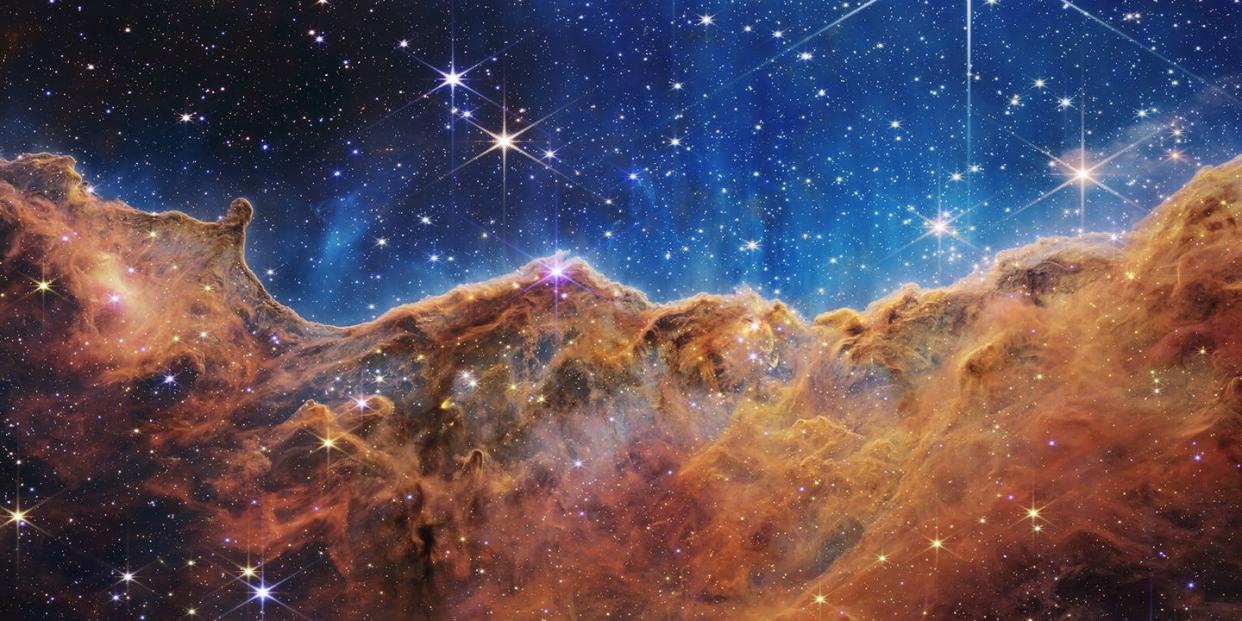
NASA’s first fully-focused images from the James Webb Space Telescope peer into the origins of the universe and examine exoplanets that could harbor alien life. The $10 billion telescope’s sensors scrutinize targets near and far, from a galactic arm of our own Milky Way to never-before-seen galaxies being born in the deepest reaches of space. Its spectrograph has also divined the chemistry of another planet's atmosphere from more than 1,000 light years away, finding a gas giant called WASP-96 b hazed with clouds of gaseous water. The resulting images and data showcase the telescope’s unparalleled versatility.
It’s a moment of triumph for scientists around the world, who now have a groundbreaking tool to aim at humanity’s most existential mysteries. But it’s also a victory for the flight operations teams who shepherded the telescope during the first critical weeks of its mission. This is their story.
Launch + 3 Days
In the black silence of space, a drive motor on the James Webb Space Telescope comes to life in a series of coordinated spasms. The motor’s subtle motions are unnoticeable on the spacecraft, a foil-encased rectangle a little larger than a pickup truck, but a major transformation is beginning.
It’s December 28, three days after launch, and the James Webb Space Telescope is now 350,000 miles from Earth, more than a hundred thousand miles farther than the average distance to the Moon. Even at a 2,000 mph cruising speed, it has a long way to go before it reaches its home, an orbit around the sun called L2.
These solar system sweet spots exist where the gravitational pull of the Earth and Sun counter each other’s influence, making them efficient parking positions for long-duration spacecraft. L2 is especially suited for astronomy because it has a good line of sight to the sun for power and is close enough to Earth for reliable communications, while also being able to peer the other dark direction into the depths of space and time.
JWST won’t be the same spacecraft when it gets there. The telescope, packaged to fit inside a rocket fairing just 17 feet wide, is carefully folded into a rectangular shape, with only a solar array extended to form an L. Soon it will soon transform into an 69.5 by 46.5 foot engineering marvel built to peer into the distant past of the universe.
This metamorphosis begins with a humble series of operating tests of a single motor, a process space engineers at NASA sometimes call “flinching.” The motor provides the muscle to deploy the front sunshield pallet—one of two masts that hold now-furled material that will one day protect the spacecraft’s instruments from the heat from the sun. But before the motor performs its vital duty, it must prove out in a series of operating tests, deliberate, tentative moves that recall a butterfly testing its limbs inside a chrysalis.
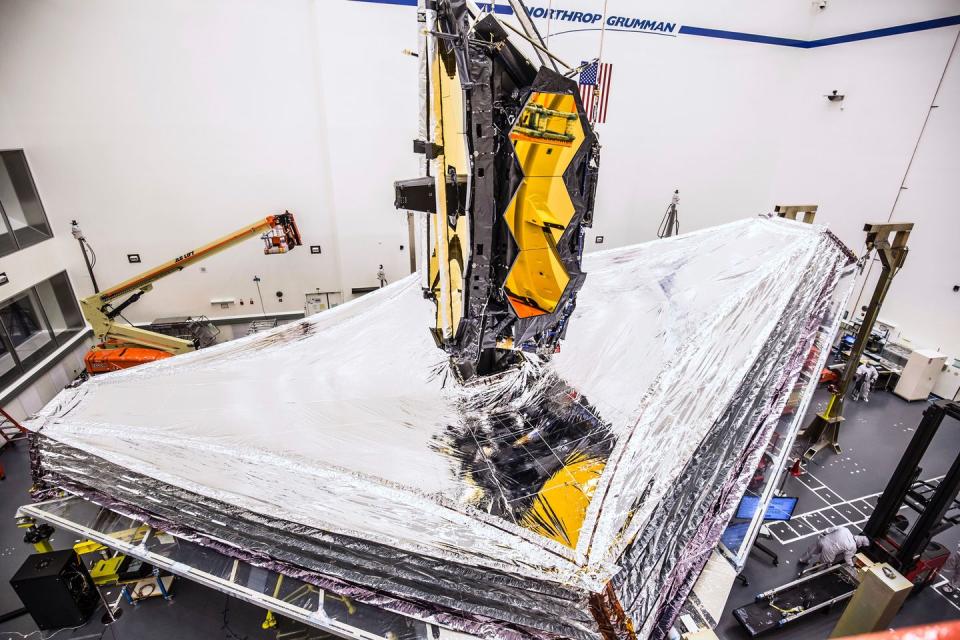
It will take the next two weeks for engineers to deploy every folded, collapsed, and compressed component of the telescope. The tennis court-sized sunshield will unfurl from a pair of pallets. The main mirror will unfold its hexagonal panels like the eaves of a dining-room table. The secondary mirror will extend almost 25 feet from the telescope’s body aboard a lengthening tripod. Adding to the challenge, there are no cameras onboard aimed at the telescope, leaving engineers on the ground to monitor its progress using data alone.
Executed continuously, these deployments could take as little as five days, but the engineers stretch the process on purpose. Of all the thousands of mechanical steps between launch and operation, 344 are “single points of failure” (SPOFs). These steps, if not executed properly, would render the entire $10 billion telescope useless.
This space telescope is built to answer some of the most fundamental questions about our existence. If it works, its suite of infrared cameras will capture things formed in the afterglow of the Big Bang, the formation of far-flung galaxies, and the chemical signatures of alien planets. By any standard, it’s the largest, most powerful space telescope ever built. It’s also the most expensive.
Initial cost estimates for the JWST lay between $1 billion and $3 billion, but between 2003 and 2021, NASA alone spent $8.8 billion on its development. The European Space Agency, which provided the Ariane 5 rocket that lifted the JWST to space, as well as two of its four science instruments, paid around $700 million. The Canadian Space Agency paid over $150 million for sensors and instruments. The diplomatic cooperation was critical to the JWST’s completion, but under these circumstances, a technical malfunction could mean diplomatic backlash, too. The telescope could become the new global symbol for overpriced and underwhelming science projects.
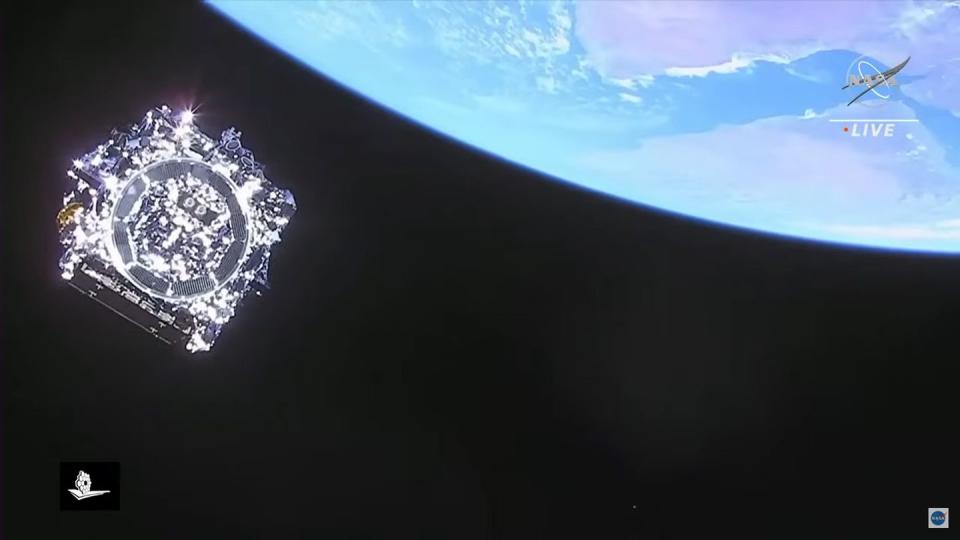
Putting the two sunshield pallets in place, one at a time, is this day’s only ambition. Webb’s 0.2m medium-gain antenna sends the motor telemetry to NASA-run antenna arrays in Australia, which relay the data to the telescope’s Mission Operations Center (MOC) at Johns Hopkins University in Baltimore.
MOC, or “the mock,” consists of two central rooms where JWST operators from NASA and its manufacturer, Northrop Grumman, scrutinize banks of monitors—sometimes as many as four at a time. The Flight Control room is the Earth’s only direct point of contact with the spacecraft, the exclusive domain of Mission Ops Manager Carl Starr (referred to as “MOM” by the engineers) and his command controllers. These engineers send directions to the JWST, cutting and pasting prewritten software instructions for the spacecraft and typing in any empty variables.
The adjacent Engineering Support Room is the catch-all place for subsystems engineers, and the temporary home of the Deployment Team specialists. For the first two weeks after launch, the two dozen Deployment Team members are responsible for every step of Webb’s physical transformation into a telescope. This requires obsessive attention to detail and an ability to suss real-world problems from abstract sheets of figures. “We never move on to the next step until we absolutely get confirmation from our Deployments Team that everything is responding in a way that matches what we thought would happen,” says Keith Parrish, the JWST Observatory Manager. Did switches report their change of status? Did gear and ball bearing counters register the correct number of turns? What are the temperatures and power consumption of each part?
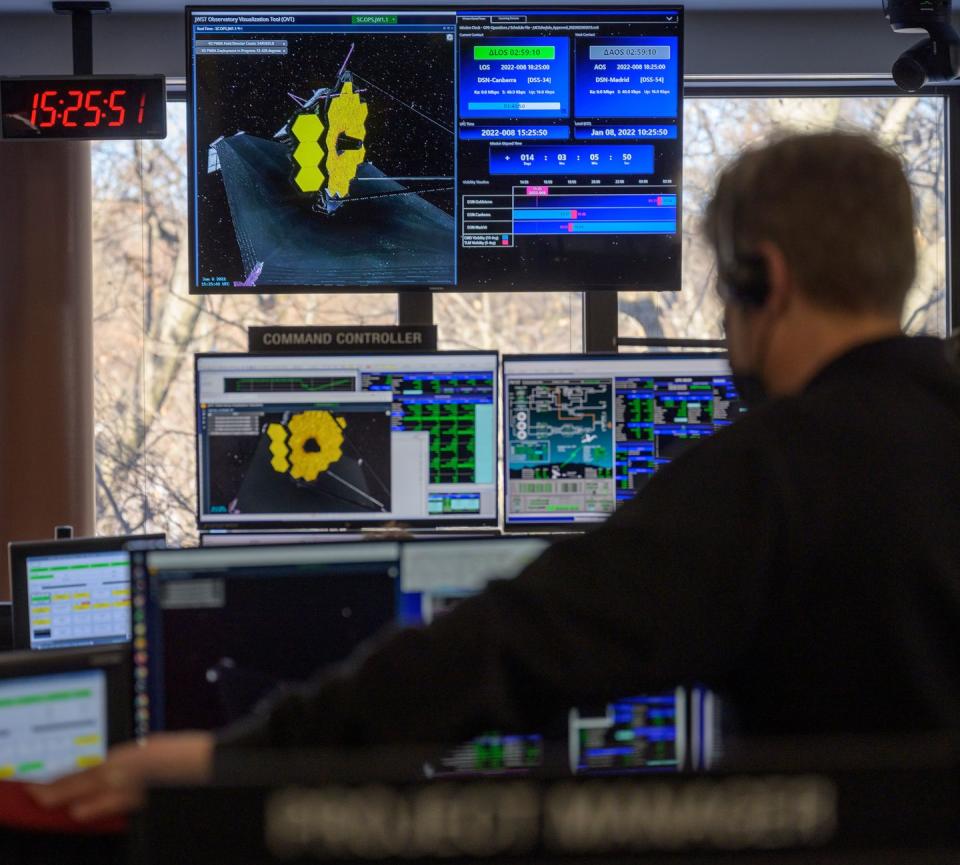
After confirming the pallet motor is healthy—the onboard data proves to be consistent with expected readings—engineers move on to the next step. They flinch the motor via electronic signals sent to the metal windings around the brushless DC magnet. More data affirmation enables the deployment team to clear the flight controllers to unlock the latches holding the sunshield’s forward pallet in place.
The major action is set to begin. The motor rotates its forward pallet into position toward the fore of the spacecraft, a waking bird stretching one wing. “Motor status is moving,” intones Grumman engineer Nanci Shawger, the day’s Deployment Lead, to the flight operations room. Engineers in the MOC have access to a real-time 3D simulation of the telescope, showing its configuration based on incoming data, but no actual eye on the telescope.
The forward pallet takes 20 minutes to unfold. The engineers in Baltimore confirm success at 1:21pm, concluding a four-hour process from prep to deployment, only to repeat the entire procedure for the aft sunshield pallet. They begin flinching its motor, and by 7:38pm, it’s in place, too. So far, so good.
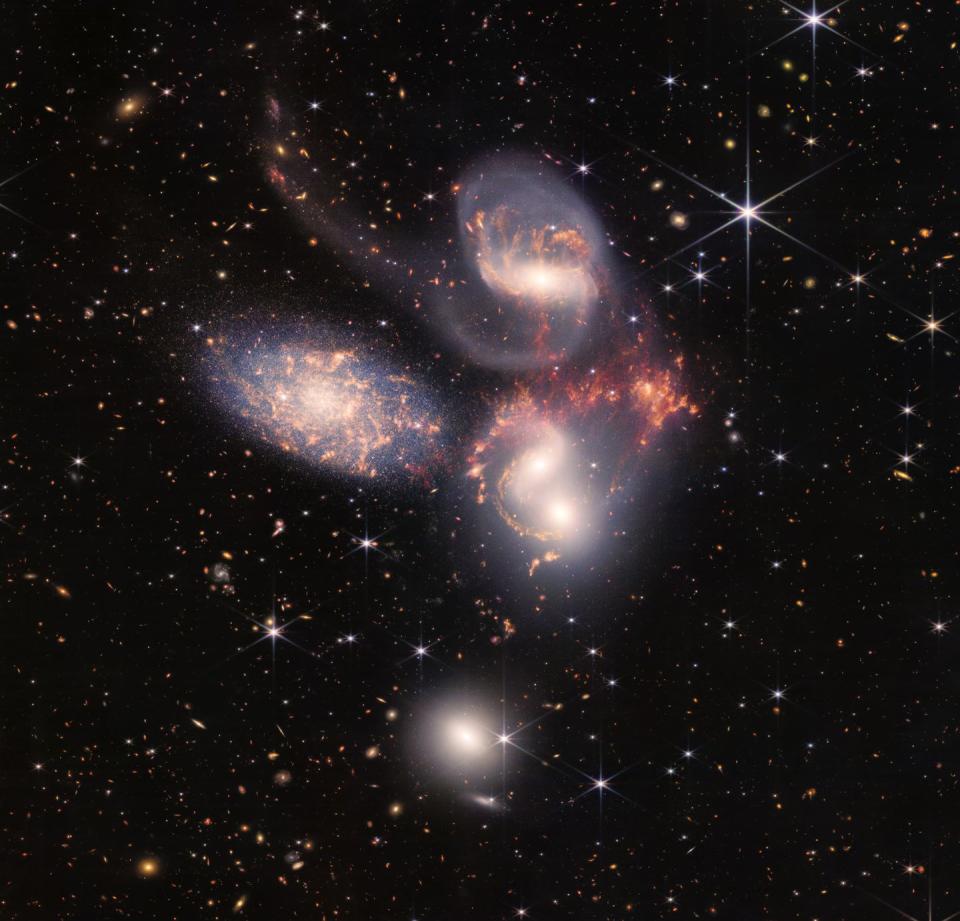
Building an Emergency Toolkit
L+ 4 Days
On December 29, the Flight Controllers order the extension of the Deployable Tower Assembly (DTA), a two-piece telescoping boom. It’s design is reminiscent of a microphone stand, but one made of an advanced graphite-epoxy composite that keeps its shape and strength despite extreme temperature changes.
When fully deployed, the DTA will push the telescope’s body four feet away from the spacecraft, giving the JWST’s mirrors and instruments enough elbow room to operate at a safe distance from vibrations and heat sources on the main body of the spacecraft.
Any sensor reading from the JWST outside expectations, like a temperature reading or voltage draw, triggers an informative alarm. Most of these are expected and discarded, but during a true emergency, a response team forms from experts in every onboard subsystem drawn from the Deployment Team. This response team comes equipped with a slate of emergency software commands, all tested ahead of time. “Part of my job for a couple years now has been to come to work every day and just try to figure out what could go wrong,” Parrish says. “And then make sure to see if we have something in the toolbox that can fix it.”
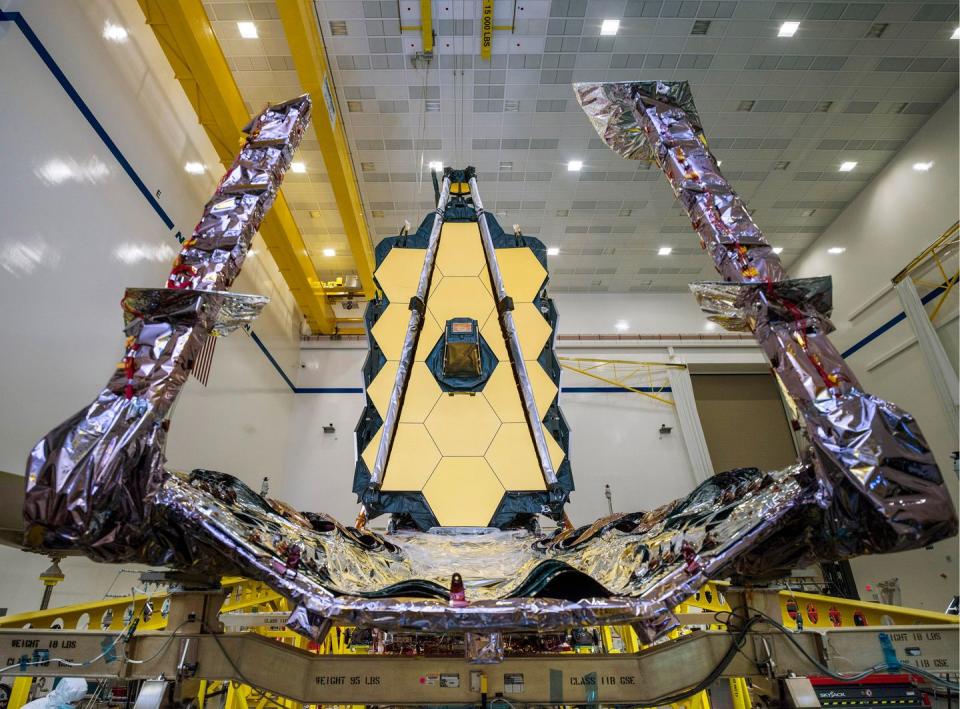
Some solutions are simple, like commanding a sticky mechanism to slide back and forth to clear a jam, or adjusting the torque of a motor to lessen its force and prevent overheating. Other solutions are more complicated. Let’s say a hinge jams: One series of emergency commands tells the spacecraft to spin in and out of the sunlight, in hopes the rapid heating and cooling will expand and contract the metal and unjam the hinge. That sequence is called “twirl.” In another nightmare scenario, a latch isn’t unhooking from its assembly. The reaction wheels can be flipped on and off in a jarring sequence that vibrates the telescope and shakes the hook loose. That move is called, “shimmy.” “If we're doing those things, we're not having a very good day,” Parrish says.
To prepare for the DTA’s motor activation, the MOC engineers in Baltimore activate release devices and configure heaters, software, and electronics. The motor is made for deep space, machined from high grade stainless steel and insulated with polymers—it’s difficult for heat to dissipate in a vacuum. When activated, it turns counterclockwise, moving the ball screw and propelling the DTA’s pieces along the rollers. With breaks for verification, the 48 inch-slide takes more than six and a half hours before completion.
A New Issue Emerges
L+ 5 Days
On December 30, attention turns to the most risky part of this spacecraft deployment - the sunshield. By the afternoon, the team hopes to release and roll the covers that protected Webb’s sunshield during launch.
The sunshield is made of wafer-thin sheets of Kapton, invented in the late 1960s for use as insulation in a bunch of terrestrial electronics, and coated with aluminum that gives it a silvery, sci-fi look. Its main attribute is that Kapton doesn’t easily deform no matter what the temperatures, remaining stable from -452 F to 752 degrees F.
The MOC staff release the devices folding the cover and order the motors to pull into a tight roll, exposing the sunshield to space. This takes about an hour, concluding just after noon. The team then takes the rest of the afternoon to prepare for the next day’s critical step - unfurling the sunshield itself.
The telescope’s deployments so far have been similar to steps from previous missions, with hardware used on Mars landings and the Hubble Space Telescope. But unfurling the telescope’s sunshield will be novel and risky. Nothing so large, supple and flowing has ever been opened in space.
The sunshield material is tough, but its deployment is worrisome to mission managers. “We’re deploying a lot of floppy structure, not like the deterministic, rigid structures that we’re all used to,” says Mike Menzel, JWST’s lead Mission Systems Engineer. “So, there’s a lot of features in place to make sure that the sunshield never drifts off and gets a mind of its own.”
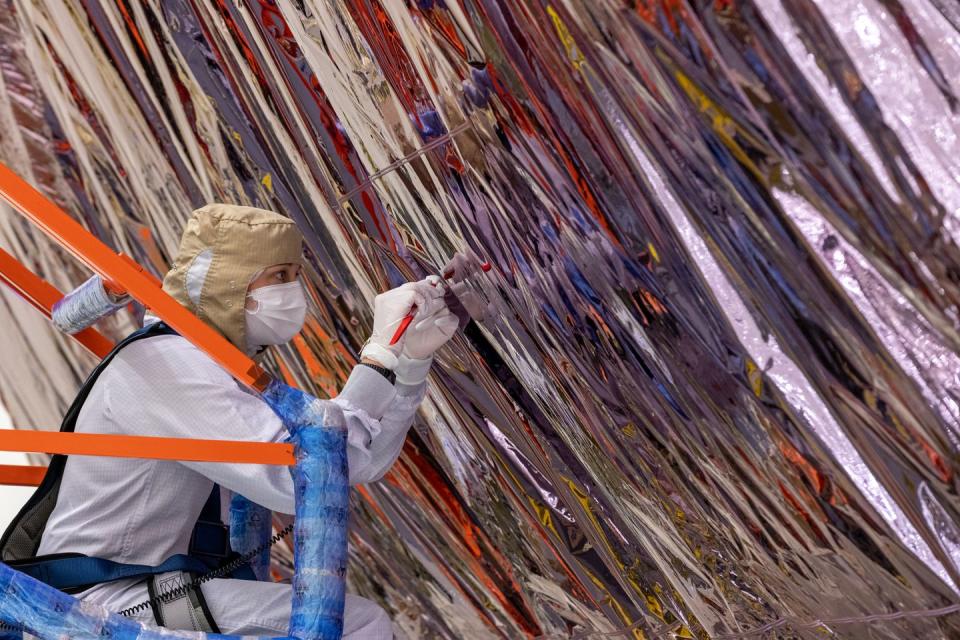
The numbers expose his understatement. The sunshield deployment hardware includes about 140 release actuators, approximately 70 hinge assemblies, eight motors, 400 pulleys, 90 cables and scores of bearings, springs, gears and magnets. There are more than 7,000 parts involved with pulling the entire structure into place, and none are more important than the 107 pins that have been holding the sunshield’s cover in place since launch. The pins are simple—they’re wrapped in a fuse wire that, when fired with a jolt of electric heat, frees the pin to move and snap its corresponding wire—but each is an SPOF. If one pin doesn't release, the entire sunshield will stay in place. The only hedge against SPOFs is redundancy, so the pins have cross-fed electric triggers, but there’s still just one chance for this to work.
To limit power drain, the engineers release the pins in groups of five or less, in columns running from the center of the shield to its edge. A column of pins running down the middle of the shield fires first, moving the cover a fraction of the way. “We did the next row and that part of the cover would unroll, and the next row, and this cover would unroll,” says James Cooper, the Sunshield Manager for NASA Goddard and a Deployment Team leader in the MOC. “Eventually the last group was a column down the edge to allow the cover to roll around out of the way.”
It takes about an hour to deploy all 107 pins. It’s a seeming success, but engineers at the MOC see a potential problem in the power system.
Each solar array on the JWST has five panels, each with an operating time limited by its temperature (a warmer panel is less efficient). The panels are meant to produce power above 65 volts for the Webb to operate at an optimal level, but because of the time limits, they’re only producing power peaks of 58.6 volts. It’s enough to run the spacecraft, but it requires the Webb to nip from its rechargeable battery. And though power supply wasn’t an issue in firing the pins, later operations demand more electrical juice than the array is producing. It's a problem they know will need to be fixed.

The Onboard Anomaly
L+ 6 Days
On December 31, the mid-boom will drag half of the sunshield out of its pallet and form half its distinctive kite shape. The final preparatory step is to check whether the sunshield cover is rolled tightly on the far side of the pallet’s edge, out of the boom’s way. Four switches along the cover’s edge are meant to signal the cover is clear—these are simple, just pairs of magnets that separate when the cover moves.
The Deployment Team analyzes the data on these switches—but something is wrong. “Two sets of ’em triggered,” says Cooper. “And the other two didn't.”
This is no expected alarm. If the cover isn’t clear of the sunshield, the shield itself might not deploy correctly, and it could ruin the mission. All checklists screech to a halt. “I would say probably 50 people noticed it all the same time, because we’re all watching the same telemetry page,” says Cooper. “It starts with everybody spinning around in their chairs. Then it’s, ‘Okay, what's next.’”
There’s always one person in the MOC designated the anomaly coordinator, or ANCO. This fateful day, the privilege belongs to Greg Anderson, NASA flight controller. It's his job to coordinate a troubleshooting brainstorm with a response team and present the fixes to senior mission management.
The response team examines a 3D digital model of the JWST, the one derived from their incoming data. It’s the closest thing they have to a live look at the spacecraft. In the meeting, they’re detectives as well as engineers, looking for evidence that points to exactly where the sunshield cover is resting. On an adjacent whiteboard, Anderson scribbles while everybody “spews out their ideas,” according to Cooper.
The gyroscopes and accelerometers of Webb’s inertial reference system are sensitive enough to detect any mechanical movement on board. Using those instruments, the flight operators can confirm that some amount of mass moved on the spacecraft, consistent with the cover release devices opening. Good news, but not a definitive answer. A fresh look at the digital model reveals that, if rolled properly, the cover would shade a few of the JWST’s onboard thermometers, lowering their temperature readings.
The detectives consult the thermal-team engineers—who have already noted a drop in temperature—and learn the readings are still trending down. “The only way that that could have happened is if the cover was hanging off the edge of the structure, making it cast a bigger shadow,” Cooper says.
At his presentation to Starr and other program management, Anderson gives their final verdict: the cover didn’t roll quite far enough to trigger the sensors, but the temperature data showed it was out of the way. He recommends they continue operations and deploy the mid-boom.
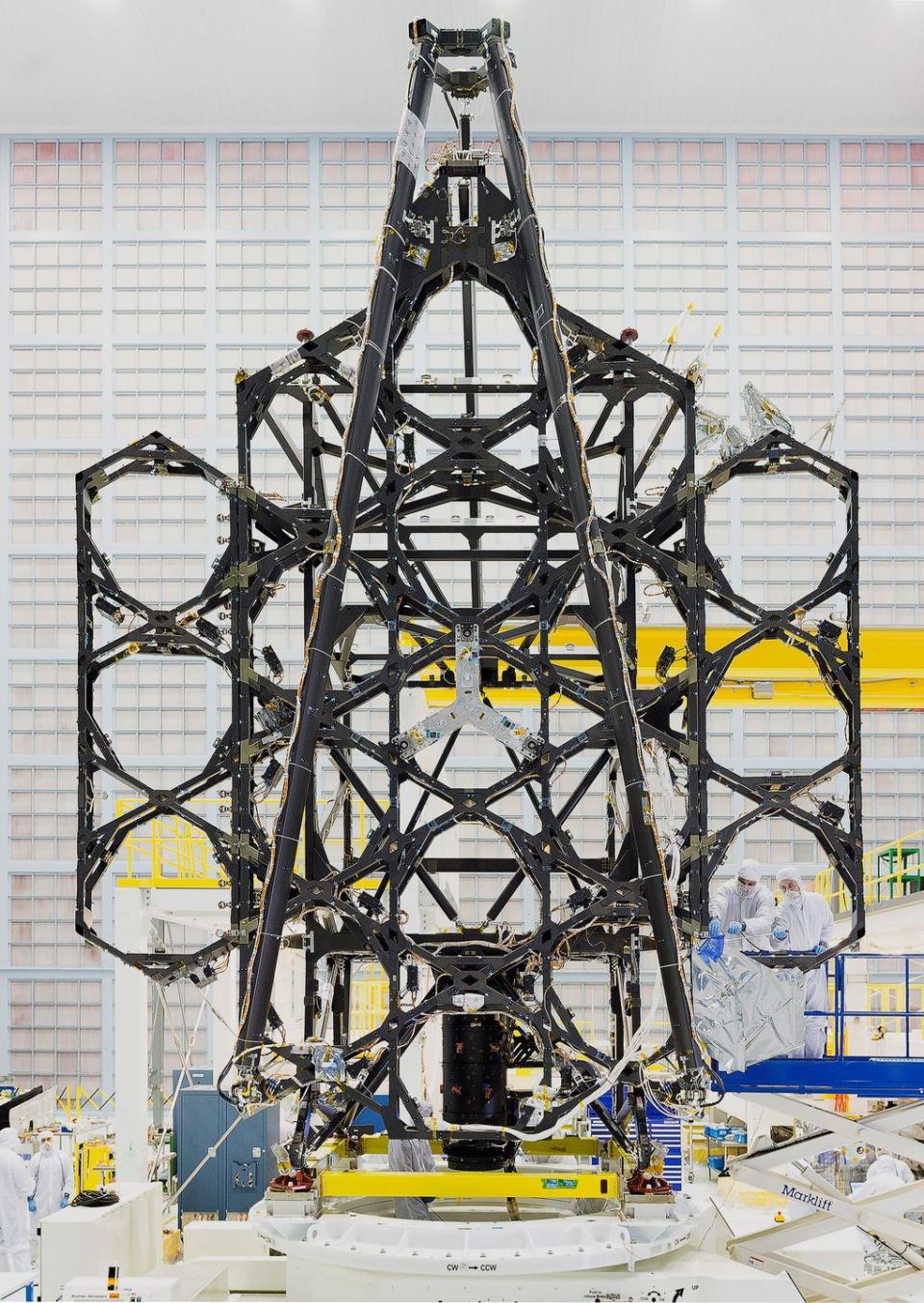
At 1:30 pm, the flight controllers order the telescoping boom to extend, and four seconds later, the first of five segments slides out. This is the moment of truth for the sunshield cover response team. If they’re wrong, they’ll soon know. For as long as 10 glacial minutes at a time, the mid-boom motors drag the silvery sunshield membrane out of the pallet. The increments are planned. “We only move it so far, a commanded range of motion,” describes Parrish. “Then the motor stops and says, ‘Hey, I just did this, what do you want me to do next? You want me to keep going?’”
And after three hours, the boom completes its journey. The response team sighs with relief as other motors heave at the cables attached to the boom’s tip and the sunshield canvas unfurls, much like a sail for the modern space age.
The mystery of what happened to the cover might never be solved. “We think that it just didn't roll up quite as tightly in zero gravity as it did in our ground tests,” Cooper says. “There is another panel there that it could be resting on. That could have prevented it from rolling all the way around to the backside. So that's our best theory.”
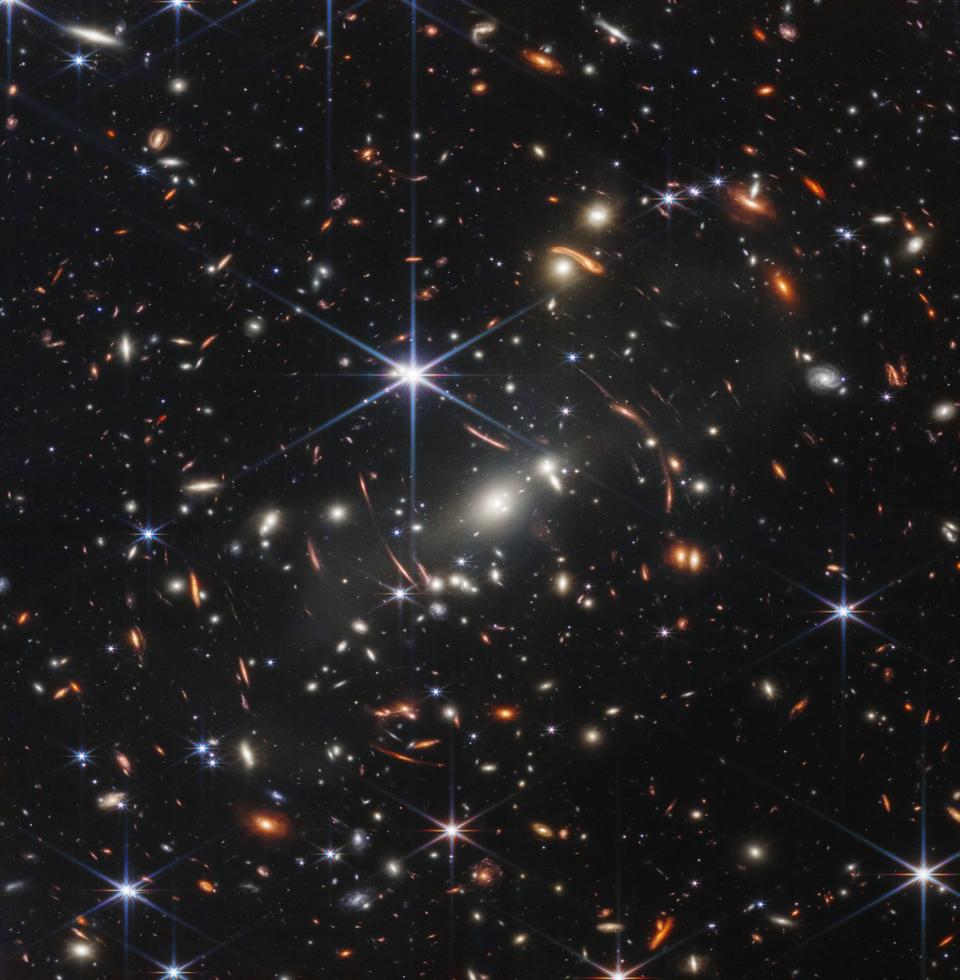
Making MOM Proud
L+ 8 Days
After the MOC takes a break on New Year’s Day, the mission managers use January 2 to troubleshoot the power system. The original duty cycle for the five solar panels isn’t delivering enough power to the JWST. A team of Northrop Grumman engineers in California run the new numbers on ground test equipment before feeding the data back to the MOC, and by the end of the afternoon the commands have been sent to the telescope. The new plan produces a power range of 65 volts to 69 volts, plenty of margin for deployments and operation. Grumman’s Amy Lo describes the results to reporters during a call the next day as “hunky dory.”
Menzel is careful while speaking to the media, even while delivering positive news. “It’s not uncommon to learn certain characteristics of your spacecraft once you’re in flight. That’s what we’re doing right now,” Menzel says during the L+9 press conference. “So far, the major deployments we’ve executed have gone about as smoothly as we could have hoped for.”
As he’s speaking, the team is analyzing the first movements of the separation and tightening of the sunshield’s layers. Because one thick awning would conduct too much heat, the sunshield consists of five layers of metal fabric, each thin sheet designed to a specific thickness and size. The outermost layer facing the sun is coated with silicon to reflect as much heat back into space as possible. When spread, the sun-facing side of the shield will register 185 degrees F while the cold side will measure minus 387.4 degrees F. The telescope’s detectors need to be kept this cold so their own infrared signatures don’t interfere with those of the faint, incoming light they’re receiving.
It’s inevitable that a space pebble will puncture the sunshield—the real risk is if that hole spreads. To prevent a tear spreading like the knee of an old pair of jeans, engineers reinforced the layers of Kapton every six feet with thermal spot bonding, melting the material into a rip-stop grid that prevents tears from growing, much like the inseam stitches on those jeans.
Tensioning that could take as long as four days. The plan includes time for troubleshooting pauses that are not needed. The flight controllers knock out all five layers in just 26 hours. By the end, six feet separate the outermost and innermost layers of the shield, but the outermost layer is more than 500 degrees hotter.
In the MOC, the relief and joy are palpable. In just under two weeks, the team has accomplished three-quarters of those 344 single-point failures. Even better, one of the hardest mechanical feats has been accomplished. “Major milestone achieved,” Starr declares over the radio when the tensioning is complete. “Job well done, sunshield team!”
“Thanks MOM,” says Hillary Stock, Grumman’s sunshield deployment specialist, who’s at the top of the MOC comms chain.
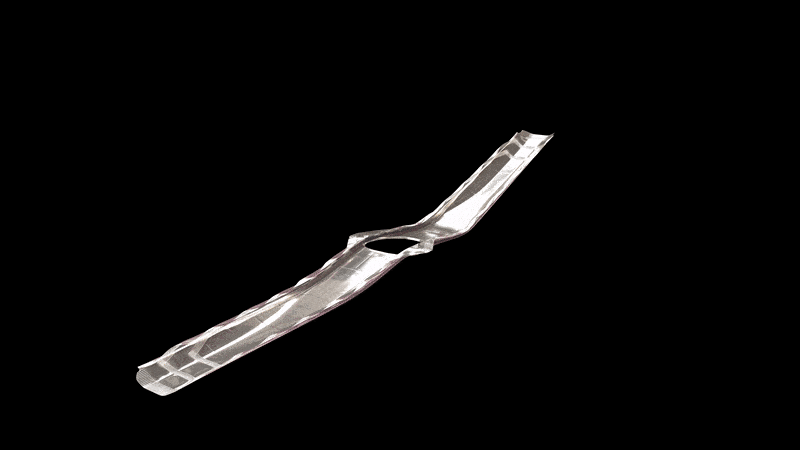
The Future of Seeing the Past
L+ 14 Days
The centerpiece of the JWST are its beryllium mirrors, both given a lustrous sheen courtesy of a 0.12 ounce coating of gold dust. This is not aesthetics at work but engineering—gold more efficiently reflects infrared light at wavelengths ideal for spotting distant stars and peering into the churning clouds of radiation where they form.
All optical telescopes in history have used mirrors to gather light, and JWST is no exception. There are two mirrors onboard—a primary to collect the light and a smaller, secondary mirror. Webb’s primary mirror is 21 feet in diameter, almost triple the diameter of the Hubble space telescope’s primary mirror. This larger size grants the JWST greater sensitivity; wide mirrors can distinguish distant objects that appear close together, what’s known in the optics world as a “fine angular resolution.”
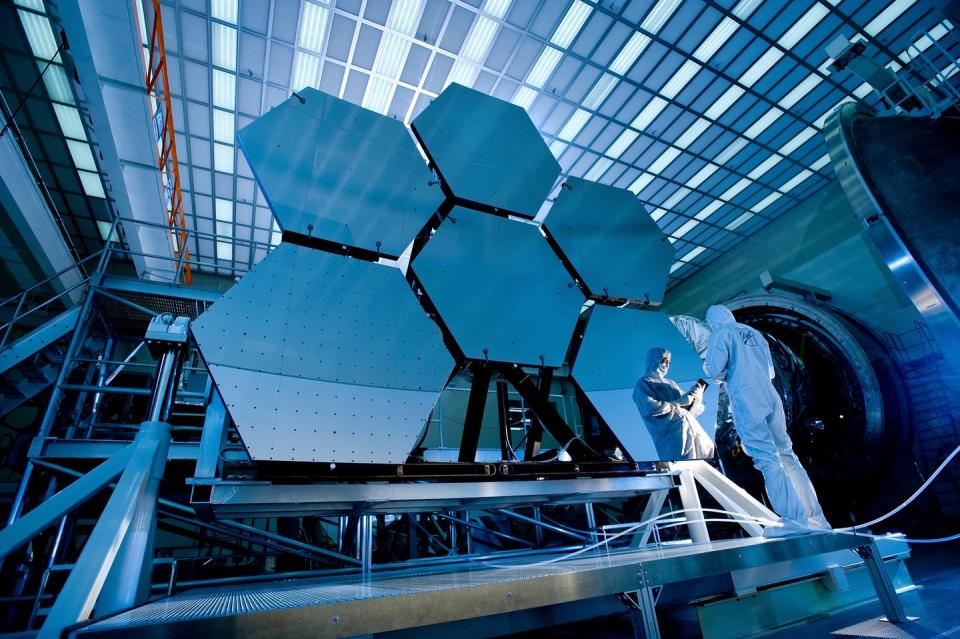
The secondary mirror is about 7 feet across, its convex shape gazing inward to collect the starlight from the main dish and redirect it to the telescope’s instruments. JWST’s workhorse Near Infrared Camera will reveal previously unseen planets, stars, nebulae, and galaxies. A mid infrared camera called MIRI will produce astrophotography akin to what made Hubble famous.
Thirteen days after launch, on January 7, the first of two folded wings of the main mirror will swing into position. To move it, flight controllers fire a pair of pins holding the port side wing in place, and another two securing the hinge, then command the panels to rotate into position. That takes five minutes, but securing the piece with space-rated hook latches takes hours.
The next day, at 10:28am, the last three hexagons are set into place. Then it’s back to the hours of motor checks and long-distance commands to secure it. The capstone movement finishes at 1:18pm, and the MOC erupts in a cheering standing ovation. Many of the engineers stay on their feet, milling around excitedly, liberated from their checklists. The technical achievement is quantifiable—of the 344 single points of failure operations, only 49 are left. Most of these are related to focusing the mirrors or the scientific instruments.
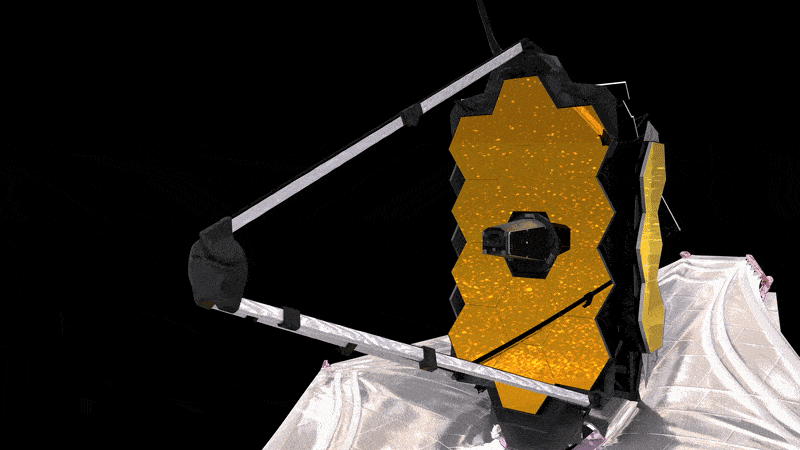
JWST Project Manager Bil Ochs gets on the radio loop, voice shaking with emotion. “The Deployment Team has done a phenomenal job over the last two weeks, but really over the last 20 years, to get us here,” he says. There’s still a long way to go. On Day 14, Webb is still only 75 percent of the way to L2. ) The light Webb will be capable of harnessing from there will reveal the universe as it was 13.8 billion years ago. There’s a lot to be learned about how quickly things in the universe formed simply by counting the number of stars in young, previously unseen galaxies. But Webb will also hunt for alien life. The telescope’s Near Infrared Camera is equipped with coronagraphs that can blot out the light of stars to detect their unknown planets.
Another imager takes this idea a step farther: an onboard Near Infrared Spectrograph uses the dispersal of light waves to divine the chemical makeup of their alien atmospheres. So Webb is more than an exoplanet hunter, it’s a tool to find planets in other solar systems that are as habitable as Earth.
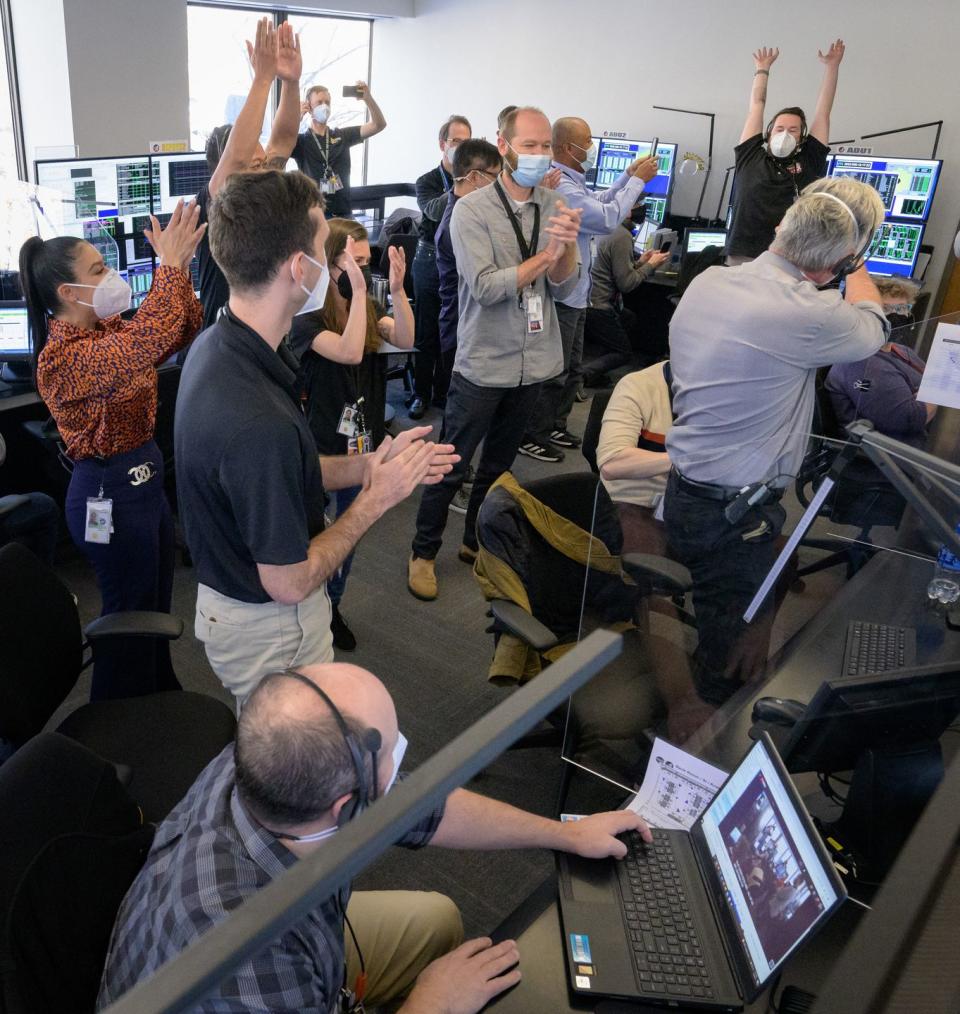
The bulk of the Deployment Team now leaves the MOC for good, replaced at their consoles by new teams with their own critical mission milestones. “One of the harder things about James Webb is that it was so complicated and uncertain,” Cooper says. “It was such a moving target that it was hard for any of us in a lead role to transition to a new job. People who have been in those roles for a long time are like, ‘Maybe I'll just take a month off and think.’”
But even with the success of the first two weeks, the teams still within the MOC are not letting their guards down now. “We'll start the emotional reflection after everything's deployed, up until then we all just want to do what we gotta do,” says Menzel. “Don't congratulate us until it’s all deployed.”
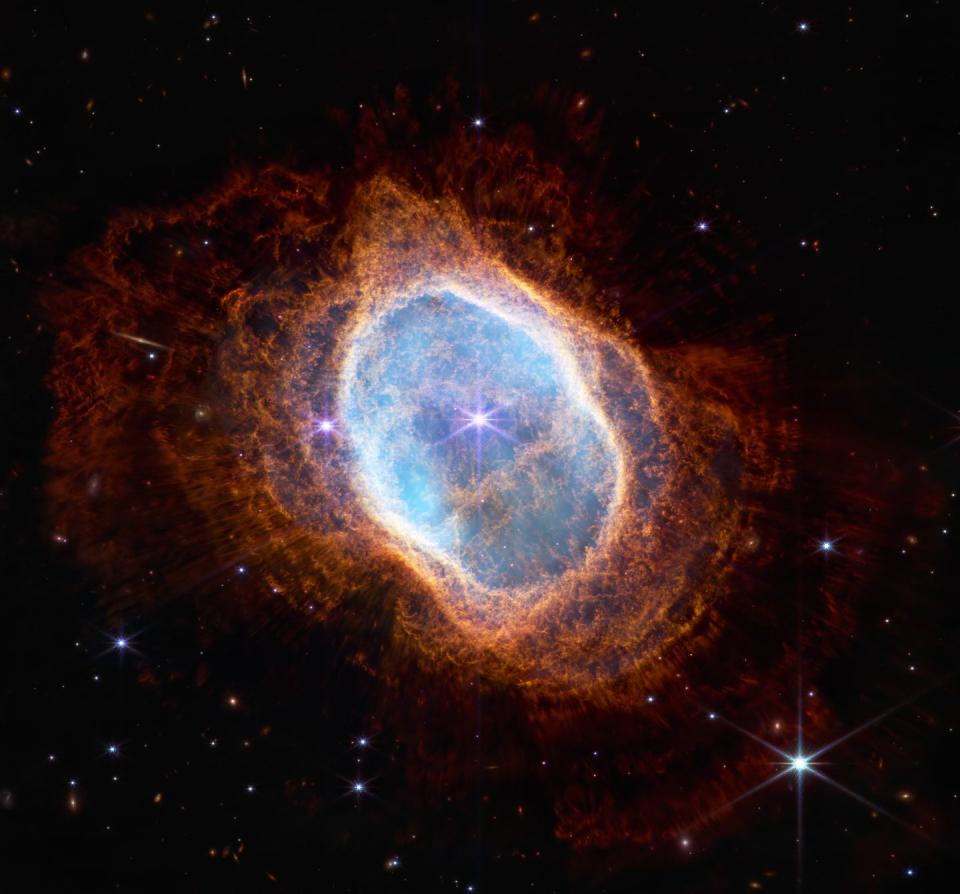
Coda: The End of the Beginning
Over the next five weeks, fresh teams of specialists in the MOC aligned the primary mirror segments so they can work together as a single surface. Mirror phasing, as it’s known, is unforgiving; each mirror must be set with a precision of 1/10,000th the thickness of a human hair. The motors controlling the mirror’s position operate at a temperature just 40 degrees above absolute zero.
In February, the James Webb Telescope reached L2, a million miles from Earth. The meticulous mirror phasing produced clearer and clearer results, and on March 16 NASA and Northrop Grumman released an initial image. It made famous an otherwise unremarkable star called 2MASS J17554042+6551277. In the background of the glittering, orange image are galaxies that have never been seen, and are yet to be identified. This test shot was just a warmup to the release of the first, fully sharpened images in July.
The perils of deep space flight - and the value of robust engineering - became apparent on June 8, when Lee Feinberg, Webb’s optical telescope element manager at Goddard, released a statement admitting the mirrors had been struck by micrometeorites. "Since launch, we have had four smaller measurable micrometeoroid strikes that were consistent with expectations,” he said. “This one more recently that is larger than our degradation predictions assumed." He added that the mirrors were working and that engineers could adjust the mirrors in case the damage interferes with imaging.
With the telescope still working, scientists from around the world could relax, rejoice, and get in line. NASA officials say they received more than a thousand research proposals from astronomers, and have initially chosen ones looking at the first stars and galaxies to emerge in the cosmos. Humanity has some pretty deep questions about the universe, and it’s now time for the James Webb Space Telescope to get the answers.
You Might Also Like


